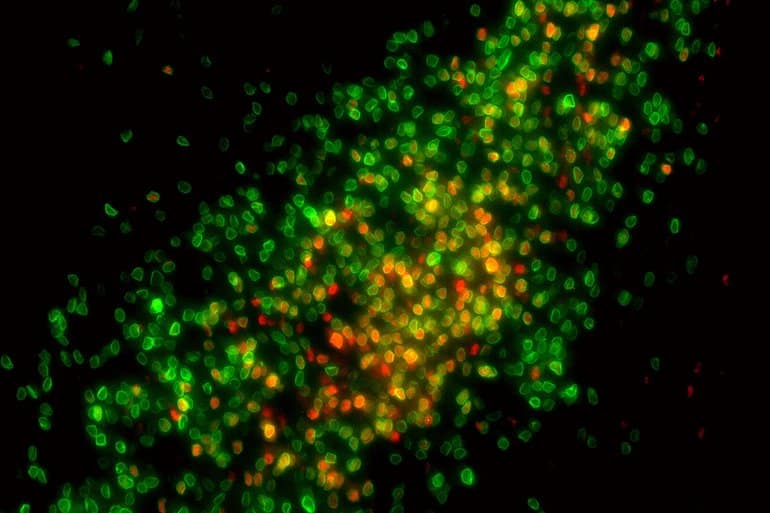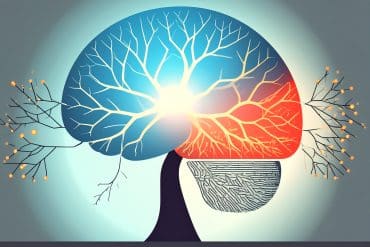Summary: Estrogen sets up physical differences in the brains of males and females during development, a new study reports.
Source: CSHL
Sex hormones play an important role in shaping an animal’s behavior, and their influence starts early. Early-life hormonal surges help shape the developing brain, establishing circuitry that will influence behavior for a lifetime.
Hundreds of genes in the brain fall under the control of estrogen. Fluctuating levels of the hormone cause shifts in mood, energy balance, and behavior throughout life, in addition to sculpting developing neural circuits early on. These effects occur when activated estrogen receptors sit directly on a cell’s DNA to turn genes on or off.
Cold Spring Harbor Laboratory Assistant Professor Jessica Tollkuhn, graduate student Bruno Gegenhuber, and their colleagues, have been mapping exactly where estrogen receptors latch onto DNA inside mouse brain cells. They’ve looked at both males and females and compared the brains of adults to the still-developing brains of young pups.
In the journal Nature, they report on the hormone receptor’s targets in the brain and show that estrogen sets up physical differences in the brains of males and females during development.
Tollkuhn explains that estrogen is present in the brains of both males and females: some neurons make it themselves out of testosterone. In male mice, estrogen generated through a surge of testosterone that is released soon after birth shapes developing circuitry.

As a result, certain brain regions are larger and contain more cells in males than they do in females—a difference that affects a range of behaviors in adulthood, including mating, parenting, and aggression.
“There’s this critical period when the brain is developing and wiring up that it has to get this input in order to make these permanent changes in the brain wiring. This is a transient surge, but it seems to have extremely long-lasting effects on brain development.”
Tollkuhn’s team examined where estrogen receptors landed after this hormonal surge, focusing on a brain region called the BNST, which is larger in males than females in both mice and humans.
They found a host of genes that were under estrogen’s control, including many involved in neurodevelopment and neuronal signaling. And although estrogen itself remains in the brain for only a few hours, it seems that the hormone-controlled genes remain active for weeks.
Now that they know what genes estrogen is targeting in the brain, Tollkuhn’s team plans to explore exactly how those genes mediate the hormone’s diverse effects on brain development, behavior, and disease.
About this neurodevelopment research news
Author: Press Office
Source: CSHL
Contact: Press Office – CSHL
Image: The image is credited to Bruno Gegenhuber/Tollkuhn lab/CSHL, 2022
Original Research: Open access.
“Epigenomic organization and activation of brain sex differences” by Jessica Tollkuhn et al. Nature
Abstract
Epigenomic organization and activation of brain sex differences
Oestradiol establishes neural sex differences in many vertebrates and modulates mood, behaviour and energy balance in adulthood. In the canonical pathway, oestradiol exerts its effects through the transcription factor oestrogen receptor-α (ERα).
Although ERα has been extensively characterized in breast cancer, the neuronal targets of ERα, and their involvement in brain sex differences, remain largely unknown.
Here we generate a comprehensive map of genomic ERα-binding sites in a sexually dimorphic neural circuit that mediates social behaviours.
We conclude that ERα orchestrates sexual differentiation of the mouse brain through two mechanisms: establishing two male-biased neuron types and activating a sustained male-biased gene expression program.
Collectively, our findings reveal that sex differences in gene expression are defined by hormonal activation of neuronal steroid receptors.
The molecular targets we identify may underlie the effects of oestradiol on brain development, behaviour and disease.






